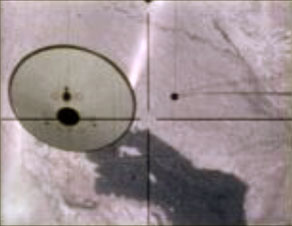|
|
René Couzinet's RC-360
L'Aérodyne (1952)
|
|
|
|
René Couzinet (1904-1956)
The "aerodyne" was unveiled in Paris by designer René Couzinet.
Tree 135-hp engines would supply the power.
|
|
|
|
|
|
This VTOL made by the Astro Kinetics Corporation, is using the "Coanda effect" for vertical thrust, and could be build at much larger scale. The 3 text images explain a lot.
|
An interesting quote from the text: ".. when we consider that the United States Air Force has spent seven and one-half million dollars on a circular lifting device of different concept and abandoned the project because of inability to perfect the device." Is he talking about the AVRO projects here?
What became of this company and craft? Mysterious!
Click here to download the Astro V Dynafan Patent
The first 3 pages:
|
Source: James Dobson
NASA's PEPP AEROSHELL
(1950s, 1966 - 1967)
|
|
|
|
The PEPP Aeroshell was created to test parachutes for the Voyager mars landing program. To simulate the thin Martian atmosphere the parachute needed to be used at an altitude more than 160,000 feet above the earth. A balloon launched from Roswell, N.M. was used to initially lift the aeroshell. The balloon drifted west to the missile range where the vehicle was dropped and the engines beneath the vehicle boosted it to the required altitude where the parachute was deployed. The tests were conducted in the summer of 1966. NASA.
The voyager program was cancelled, and replaced by the much smaller Viking project several years later.
Later, NASA used the Voyager name for the Voyager 1 and 2 probes to the outer planets--these had nothing to do with the Mars program called Voyager.
There is one PEPP Aeroshell left over, at White Sands Missile Range, New Mexico.
|

|
For a short video, click HERE
This video is probably not from the PEPP series of tests, but from a later series called the Balloon Launched Decelerator Test (BLDT) program that qualified a supersonic parachute for the Mars Viking Landers.
NASA conducted the Balloon Launch Decelerator Tests to qualify a supersonic Disk-Gap-Band parachute for use on the Viking Lander missions of the mid 1970's. This must either be test AV-1 or AV-4. Those two tests deployed the parachute at a higher Mach number and required four solid motors to achieve the proper deployment conditions. The video seems to show four plumes after the initial spin-up. The other two tests only used two motors or had no motors.
|
|
|
|
|



